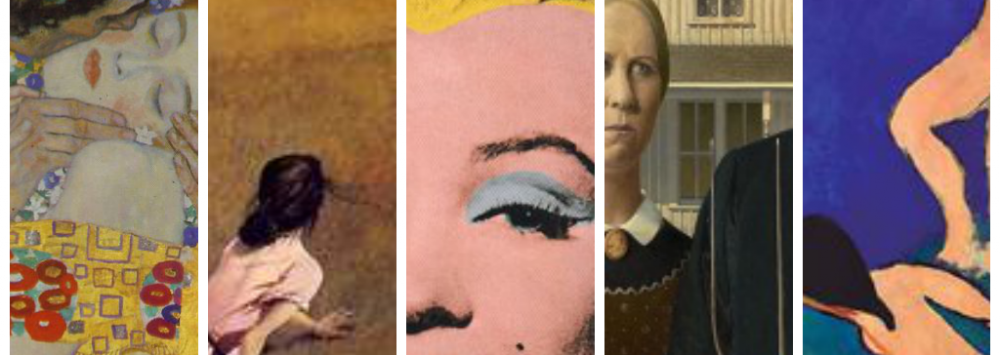Frank Stella: by Joey Hebl
Biography
Frank Stella was born in Malden, Massachusetts in 1936. He went to prep school at Andover Academy where the abstractionist painter, Patrick Morgan, who was an art teacher at Andover, promoted his interest in art. Although lacking a major in studio art, Princeton allowed Stella to come into his own as in artist. He was mentored by Stephen Greene and William Setiz, who were faculty at Princeton, who often took Stella on trips to New York where he was exposed to the works of Jackson Pollock, Franz Kline and Jasper Johns. Pollock’s usage of house paints was clearly inspired Stella’s first major work, Black Paintings, in which he used house paints as well. Black Paintings, along with his other early work, was monochromatic in its palette and clearly manifested Stella’s rift from what had been vogue at that time in art: Abstract Expressionism. Stella was one of the leading pioneers if not the founder of the minimalist movement and summed up the simplicity/lack of spiritual transcendence, which had been so prominent in abstract expressionism, “[a painting is] a flat surface with paint on it–nothing more.”
Minimalism
Minimalism was born in New York during the early 1960s. Works created in this genre meshed both paintings and sculptures. Artists avoided metaphors, deeper meanings, spiritual transcendence, social comment, self-expression, narrative, any allusion to history, politics, religion; most things that were the foundations of previous art movements and things that made previous art movements successful. But for minimalists, the piece was not to extend beyond its existence with the viewer. Artist expression, which had been pivotal in Abstract Expressionism, was rejected. It was all about the piece and the viewer and the space both of them occupied together; no strings attached to any other abstraction whether tangible or intangible. The movements seems to have been inspired by Russian Constructivism, Pop Art’s objectivism, and Dada’s readymades.
Technique
Stella’s first major exhibit came in 1959, when a few of his works were put on display at the MOMA, which was hosting an exhibit titled “Sixteen Americans.” It was here that his work Black Paintings put him on the map in the Art world. This piece perfectly demonstrates Stella, and more broadly, the minimalist’s focus on nonrepresentational art. The focus was not on the context/deeper meaning of the work but rather specifically on the pieces presence/existence. “What you see is what you see,” explained Stella. Between 1958-66, Stella’s palette lacked much vibrancy. But in 1967, with his work “Protractor Series,” his use of sweeping arcs with brilliant colors seemed to denote a change in Stella’s technique. And during the 1970s, Stella began working in collages and sculptures, although he explained, “a sculpture is just a painting cut out and stood up somewhere.” Works that demonstrate this technique are Polish Village (1970-73) and Brazilian in 1975.
21st Century Comparison
I find Stella’s earlier works–Black Paintings–to be similar to the painting exhibited at the ICA by Philip Taaffe. The name of his piece is Untitled III and it is a large canvas that has vertical black lines one inch thick interspersed with white lines of similar thickness. The piece seems very simple in it’s design, creation and effect just as Stella’s Black Paintings. But once you look at it for a while you find yourself entranced by the piece and its almost overwhelming repetition. It plays tricks on your eyes; has an illusion aspect to it that was noted in Stella’s works. It’s interesting that the minimalists focused solely on the being of the piece and not on its meaning or even themselves as creators and what they felt. This is similar in the fact that this piece is titled Untitled, not giving the viewer any hint that there is some other way of interpreting the piece beyond the its real, tangible, visible existence before us.
Personal Reflection
I enjoy looking at Stella’s works. The illusion aspect of his earlier work and even in the collages and sculptures make for an interactive experience where the piece almost feels alive. The Protractor series, with its vibrant colors and arching design reminds me of the 60s/70s disco clubs, or at least what is represented of that time in the Austin Powers movies. It’s very clear that Stella helped create a movement that broke almost completely away from its predecessor, abstract expressionism, and that is something to respect, even though he is a smurf. I see and somewhat part take in the appeal of the piece not having any meaning and being solely about its visible/tangible existence buy I’d prefer
Black Paintings-
Protractor Series-
Polish Village-
Bibliography
“Minimalism (1960-1975)” wwar.com/masters/movements/minimalism.html. september, 22, 2009. Webpage. May 16, 2014
Wolf, Justin. “Minimalism.” The Art Story. Webpage. May 16, 2014
“Frank Stella.” The Art Story. Webpage. May 16,2014
“Frank Stella.” YourDictionary, n.d. Web. 16 May 2014.







